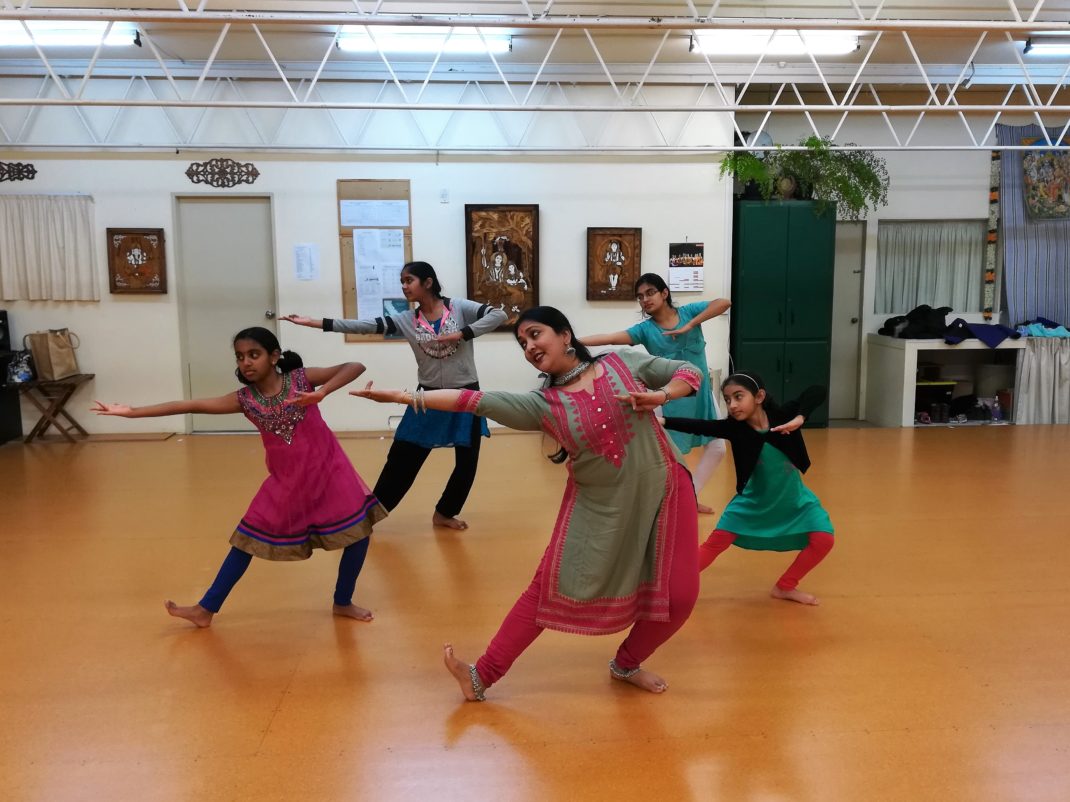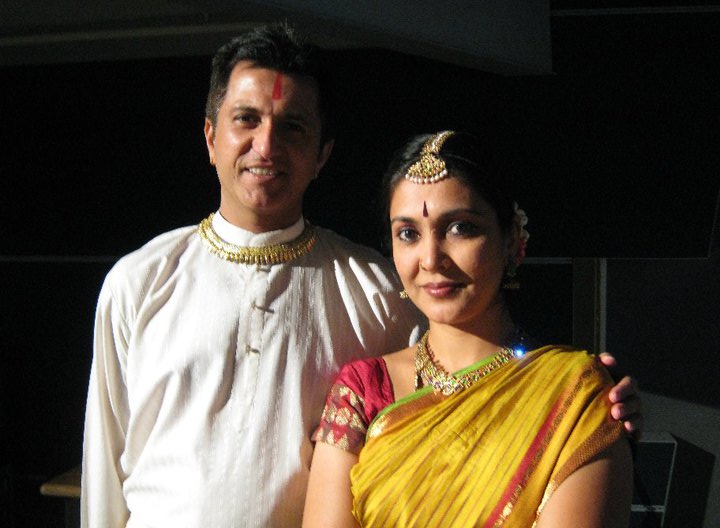Ever since Vivek Kinra began teaching Bharata Natyam classical dance in Wellington in 1990, there has been a little corner here, an enclave of India, brought close. His commitment to highest standards and consistent discipline is familiar from all dance training, but the way Kinra has single-handedly built up his academy for the daughters of Indian families here to study to the same level and standard that would be available to them back in India, is remarkable.
Over the years, there have been 27 public seasons of original choreography performed by Mudra Dance Company, there have been 40 arengetram or solo graduation recitals each of several hours duration, and the number of pupils attending classes over the years would be close to 2250. At least as impressive as these numbers is the fact that Kinra can probably tell you the names of them all without having to look up any records. The incisive mind and indefatigable memory of an Indian dancer is a source of wonder, and it is heartening to know that Kinra’s work here has been recognised when he was made a member of the New Zealand Order of Merit (MNZM) in the 2010 Queen’s Birthday honors for his ‘huge contribution to the New Zealand dance scene’. In February 2015 he received the Absolutely Positively Wellingtonian Award for his ‘outstanding contribution to Wellington through his work with Indian classical dance’.
Krishnaveni Lakshmanan was one of Kinra’s main teachers at the renowned Kalakshetra School in Chennai where he trained full-time from 1982 to 1987. Her daughter, Gayatri, and Vivek have been close colleagues since their student days, and she has visited New Zealand four times as a guest teacher at Mudra Dance Academy, and to act as artistic associate in the preparation of choreography and related arts for Mudra productions. Gayatri has performed in three productions in New Zealand with Kinra.
I watched Gayatri teach a number of classes at the junior and senior levels, and also spoke with her at length. (I am fortunate to be currently pursuing a PhD in Anthropology at VUW, profiling three dance communities in Wellington—free-lance ballet artists, the dancers at Mudra, and the Tokelau community dance group at Te Umiuminga in Naenae).
Gayatri instructed the pupils, ‘The little boy Krishna has long black curly hair—you show that by this gesture—not just wavy hair, but truly curly locks—lit from behind by a silver moon, a new moon, giving him a natural halo—quite different from a full bright moon that would be impossible to look at. He is an adorable little boy playing about. Of course you are going to fall in love with him, and it’s sure that we will too. You have to show us these things in the way you dance…’ I remark later that portraying the soft light of a crescent moon as opposed to a full moon is a sophisticated concept for young students to master. She replies, ‘Well, if dancing was so easy we would all be somewhere else.’ True.

‘Actually I don’t separate myself as a dancer from the dance itself. I’m lucky—I believe in Krishna so I can easily dance about him. But for my young students (Gayatri runs her own school in Chennai, where she has 75 pupils)—and these young ones here, many of them do not go to the temple, they possibly they do not believe in Krishna. So I have to encourage them to look inside themselves, to think about what similar qualities they do believe in, to portray those instead.
I will tell you something. When I was 15 years old, I was with my Father—and he had an accident. It was just terrible. I stayed with him, but he died from that accident. After that, I hated the Gods, I did not want anything to do with them. I gave up dancing—left it altogether—for three and a half years, I did other studies. After that long time, I came back to dancing, and started preparing for a special performance where I was to portray a devotee of Krishna. I had to search for him, to make some sense of what I believed in, what those beliefs represented and how they related to my dancing. By degrees I found him. Now his spirit is in me, always close by.
My mother taught me “Do not look at the audience while performing, do not try to connect with them. You will distract yourself, and them as well. Concentrate on creating the character, the little child. You will disappear and the audience will see the child in your place”.’
To her students, ‘Now listen—Siva from many temples can be depicted in dancing in a number of different ways—this mudra, that pose, that movement—but if it is Siva as Nataraj from Chidambaram you are dancing about, there is only one way to show him. You must first depict the architecture of the temple, the circular points, your arms are there, your wrists are here, your fingers are thus. This is uniquely Siva as Nataraj, in Chidambaram.’
The temple at Chidambaram, a Hindu pilgrim centre in southern Tamil Nadu has all the original poses of classical dance depicted in sculpture. I was lucky to visit there in 1985, en route to Kerala for Kathakali studies, and can summon the impressions from that visit as though it was yesterday.
Kinra’s students are primary school pupils, or at college, or university … some work as school teachers, engineers, accountants, hospital theatre nurses. All are female, most are Indian, a few are pakeha. None of it is easy for anyone though they must strive to make it seem so. ‘My Mother says dancing is 99% perspiration and 1% inspiration’, Gayatri reminds them. There is an electric atmosphere of concentration from every pupil in the studio.
I slip away after the class in awe of the 8 year old pupil I have just seen who is most exquisitely immersed in perfecting this demanding dancing. She hasn’t a clue how strikingly talented she is. She’s too busy portraying little Krishna stealing the butter without being caught. We will see more of this child, both of them.
Jennifer Shennan, June 2018, Wellington
Featured image: Gayatri Lakshmanan (right) and Vivek Kinra, Mudra Dance Academy, Wellington

This is Navneet from Wellington Punjabi Women Association Inc. We have organized our first Annual Punjabi Language week ceremony to be held on Saturday 27th Nov 2021. This will take place at Tiakiwai Conference Centre, National Library, 70 Molesworth Street Wellington and will commence at 10 am.
We are lookin for a group of Indian dance to perform of that day.
We very much hoping you all will be able to join us for what we hope will be an enjoyable event of entertainment and celebration of an emerging language. Please feel free to contact me if you have any required more information regarding this event. Kindly confirm via email.
Kind regards,
Navneet Kaur Braich
(Chairperson)
Wellington Punjabi Women Association Inc
Mobile: 020 40097606